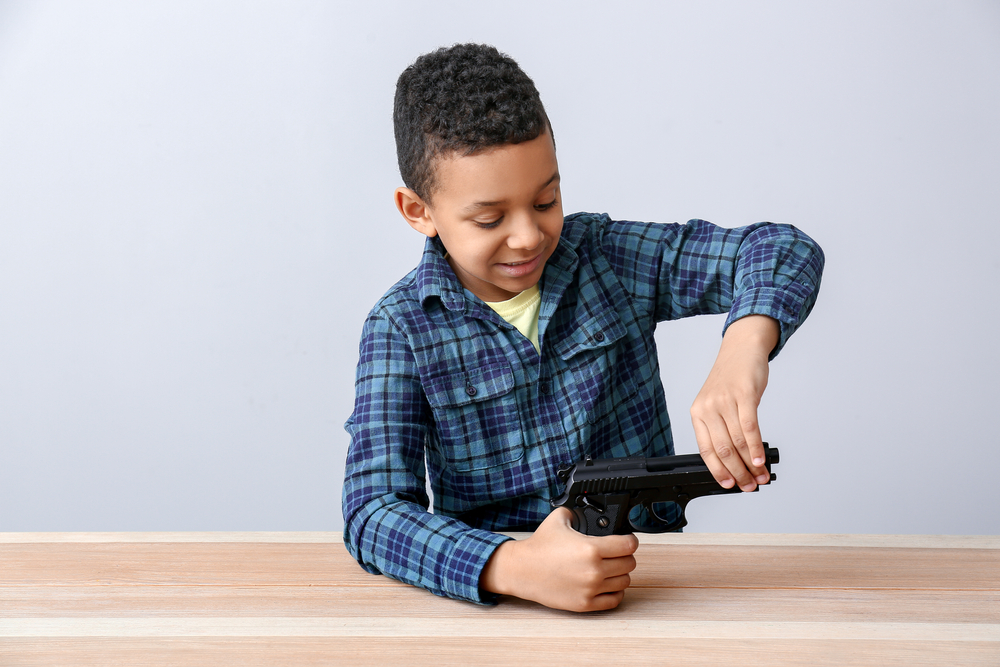Owning a firearm comes with a tremendous responsibility, especially when you have a family. The presence of a firearm in your home can evoke a sense of security, but it can also introduce risks if not handled with utmost care. Protecting your loved ones requires more than just securing the firearm; it involves creating a safe environment through education, awareness and preventive measures. This article will guide you through five essential steps to ensure your family’s safety when you have a firearm in the house, helping you balance the need for protection with the paramount importance of safety.
Step 1: Secure storage
One of the most critical steps in protecting your family is ensuring that your firearm is stored securely. A firearm should never be accessible to unauthorized individuals — particularly children. Investing in a high-quality gun safe or lockbox is essential. The safe should be equipped with a robust locking mechanism — such as a biometric or combination lock — to prevent unauthorized access.
Why this matters
Accidental firearm discharges are a leading cause of injury and death in homes with firearms. By securely storing your firearm, you significantly reduce the risk of accidental harm. Furthermore, ensuring that the safe is placed in a location that is out of reach or sight of children adds an extra layer of security.
Think about the peace of mind you’ll gain knowing that your firearm is securely stored, inaccessible to curious little hands or anyone who shouldn’t have access to it. The small effort to secure your firearm can make a world of difference in keeping your family safe.
Step 2: Educate your family about firearm safety
Education is the cornerstone of safety in any home with firearms. It’s crucial to have open, honest and age-appropriate conversations with your family about the presence of a firearm in the house. Children should be taught never to touch a firearm and to inform an adult if they ever come across one.
Creating a culture of awareness
Teaching children the basics of firearm safety can prevent dangerous curiosity. Additionally, all family members should understand the importance of firearm safety — including the rules of handling a firearm — such as always treating it as if it’s loaded, never pointing it at anyone and keeping your finger off the trigger until ready to shoot.
Why this matters
The more informed your family is about firearm safety, the less likely they are to engage in risky behavior. Education reduces the chance of accidents and empowers your family to act responsibly.
Consider the comfort and confidence that comes from knowing your family is educated about firearm safety. This knowledge not only protects them but also instills a sense of responsibility and awareness that can last a lifetime.
Step 3: Regularly check and maintain your firearm
A well-maintained firearm is a safer firearm. Regularly checking and maintaining your firearm ensures that it functions properly when needed and reduces the risk of malfunctions that could lead to accidents. This maintenance includes cleaning, inspecting for wear and tear and ensuring that all safety mechanisms are in working order.
The importance of routine maintenance
Just as you would with any other tool, regularly maintaining your firearm ensures its reliability and safety. Establish a routine where you inspect your firearm, and consider professional servicing if you’re unsure about any aspect of its maintenance.
Why this matters
A malfunctioning firearm can be as dangerous as an improperly stored one. Regular maintenance minimizes the risk of accidental discharge or other issues that could harm your family.
The dedication to regularly maintaining your firearm is a testament to your commitment to your family’s safety. It’s a routine that — while simple — carries the weight of protecting those you love the most.
Step 4: Implement a family safety plan
Having a family safety plan that includes protocols for firearm safety is essential. This plan should outline what to do in the event of an emergency, such as a potential intruder or an accidental discharge. Everyone in the household should be aware of their role in the plan, and regular drills should be conducted to ensure preparedness.
Preparing for the unexpected
Your family safety plan should be comprehensive, covering various scenarios where a firearm might be used or encountered. This includes where the firearm is stored, who is authorized to access it and the steps to take in an emergency.
Why this matters
In high-stress situations, having a clear, practiced plan can make all the difference. It ensures that everyone knows what to do, reducing panic and the risk of injury.
Having a well-thought-out safety plan provides a sense of control and readiness. It reassures your family that they are prepared and protected, even in the most unexpected situations.
Step 5: Stay informed and updated on firearm laws
Finally, staying informed about local, state and federal firearm laws is crucial. These laws can change, and it’s your responsibility to ensure that your firearm practices are in compliance. This includes understanding storage requirements, carrying permits and the legal implications of using a firearm for self-defense.
Legal compliance and responsibility
Being informed about firearm laws helps you avoid legal trouble and ensures that you are taking the necessary steps to protect your family within the bounds of the law. It’s also beneficial to keep abreast of any changes or updates to firearm safety recommendations.
Why this matters
Legal compliance is not just about following the law; it’s about ensuring that your family’s safety practices are up-to-date and effective. Understanding the legal landscape also prepares you to make informed decisions regarding firearm use in your home.
Knowing that you are fully compliant with the law provides peace of mind. It reinforces your commitment to doing everything possible to protect your family, legally and safely.
Commitment to family safety
Protecting your family when you have a firearm in the house is a continuous, active responsibility. By securing your firearm, educating your family, maintaining the weapon, implementing a safety plan and staying informed about firearm laws, you create a safer environment for everyone in your home. This commitment to safety not only reduces risks but also fosters a sense of security and preparedness among your loved ones. Remember, the goal is not just to protect your family physically but also to provide them with the knowledge and confidence to live safely and securely in a home where a firearm is present.
This story was created using AI technology.
















